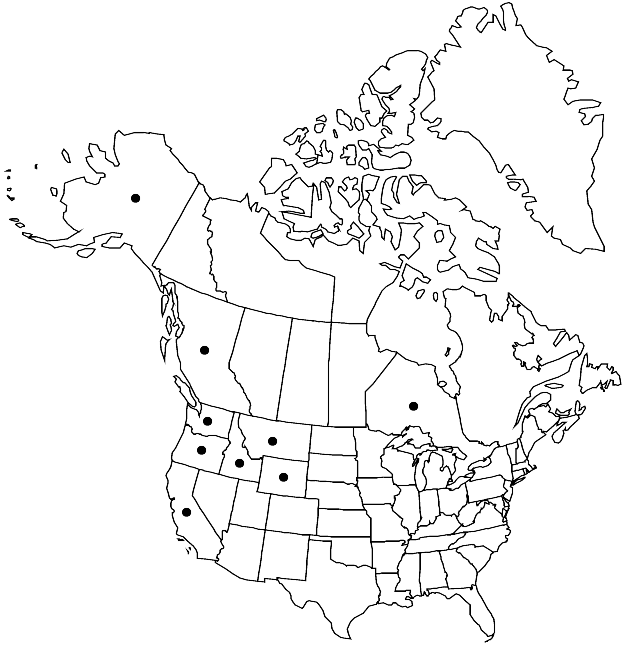Difference between revisions of "Dichelyma uncinatum"
J. Linn. Soc., Bot. 8: 44, plate 8 [upper left]. 1864.
FNA>Volume Importer |
FNA>Volume Importer |
(No difference)
| |
Revision as of 19:47, 24 September 2019
Plants to 12 cm, green to yellowish, brownish at base. Stems with axillary hairs 180–220 µm, basal cell 1, quadrate, distal cells 3 or 4, long-cylindric. Leaves weakly 3-ranked, strongly falcate to circinate at stem and branch apices, linear-lanceolate, 4–5 mm, medial stem leaves 0.4–0.8 mm wide; margins plane, entire; apex filiform-acuminate; costa long-excurrent; alar cells not or slightly enlarged; medial laminal cells 60–110 × 4–8 µm. Perichaetia with leaves not or rarely overtopping capsule. Seta 4–12(–20) mm. Capsule emergent or short-exserted, oblong-cylindric to cylindric, 1–3 mm; operculum conic, 1–1.5 mm; exostome teeth spiculose-papillose; endostome yellowish brown to orange-red, spiculose-papillose, trellis perfect. Calyptra 3–5 mm. Spores 10–17 µm.
Habitat: Tree trunks and branches (Acer, Alnus, Populus, Quercus, Salix, Toxicodendron), roots, shrubs, rock, swamps, bottom forests, flood plains, pond margins, frequently submerged
Elevation: low to moderate elevations (0-1100 m)
Distribution

B.C., Ont., Alaska, Calif., Idaho, Mont., Oreg., Wash., Wyo.
Discussion
Dichelyma uncinatum is corticolous (rarely on rock), and is distinguished by its strongly falcate to circinate leaves at stem and branch apices. Dichelyma capillaceum is similar to D. uncinatum in size, and both species have slender, linear-lanceolate leaves with setaceous apices and long-excurrent costae; in D. capillaceum the leaves at stem and branch apices are erect-spreading to flexuose-spreading and somewhat longer, the capsules are immersed or laterally emergent, and the endostomial trellises are incomplete. Dichelyma falcata has been confused with D. uncinatum because it sometimes has excurrent costae; however, D. falcatum is usually saxicolous and has much broader leaves (0.7–1.4 versus 0.4–0.8 mm wide) that are flexuose-spreading to falcate at the stem and branch apices. The remarkable record of D. uncinatum from southeastern Ontario (Parry Sound District, R. Ireland 22206 MO, NY) occurred mixed with a collection of D. falcatum.
Selected References
None.